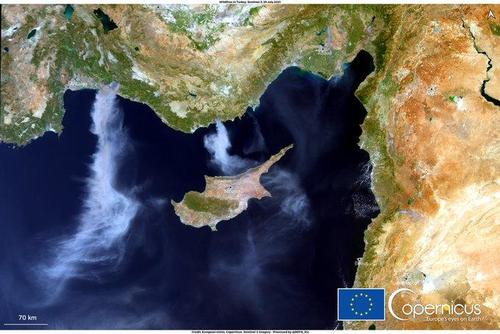In November 1900, Jane Stanford forced the resignation of the noted progressive economist Edward A. Ross from the faculty of the university that bears her surname. The Ross incident has since become a cause célèbre in the history of academic freedom, setting into motion the events that led to the founding of the American Association of University Professors (AAUP) as a safeguard for faculty rights and freedom of scientific inquiry.
Far less known is the occasion for Ross’ dismissal. Mrs. Stanford objected to a speech in which Ross appealed to the racial pseudoscience of eugenics to preserve California, which he deemed the “latest and loveliest seat of the Aryan race,” from the “stern wolfish struggle for existence as prevails throughout the Orient.”
Ross makes a brief appearance in historian Elizabeth Catte’s Pure America: Eugenics and the Making of Modern Virginia for his association with another eugenic concept: the theory of “race suicide,” wherein persons of “undesirable” hereditary stock are said to outbreed and out-populate the “productive” elite—a code for the white upper class. A century later, it is still difficult to fathom the extent that eugenic theory penetrated the ranks of the intellectual classes, in part because many people treat the tale as taboo.
Catte’s book investigates Virginia’s state-run foray into hereditary central planning, which was primarily administered between the adoption of the state’s Eugenical Sterilization Act in 1924 and the program’s termination in 1979. Virginia is distinctive for performing some 8,000 sterilizations without the patient’s consent—and in some cases without even the patient’s knowledge. It also produced the notorious 1927 Supreme Court case of Buck v. Bell, in which Justice Oliver Wendell Holmes Jr. sanctioned the state’s eugenic policies with the comment “three generations of imbeciles are enough.”
The story of Carrie Buck’s abuse by the state medical and legal systems has undergone a recent revival of scholarly interest, thanks to book-length treatments by Paul A. Lombardo, Gregory Michael Dorr, and others. Catte nonetheless gives it a missing local context by digging into the political climate of 1920s Charlottesville and the sordid eugenic history of Western State Hospital in the nearby town of Staunton. This institution employed Joseph DeJarnette, a physician who was a primary witness for the government in Buck’s case, a leading proponent of compulsory sterilization of those he deemed “feebleminded” and, later, an enthusiast for Nazi Germany’s race-based heredity laws. The hospital also provides the physical location for Catte’s concluding chapter, which probes the modern complexities of redeveloping a historically and architecturally significant site amid a climate that deems its eugenic history an impolite topic of conversation.
Catte’s strongest insight comes from juxtaposition. Virginia’s eugenic program aimed to entrench the rigid social hierarchies of the past against the democratizing pressures of a rapidly modernizing society. Although the eugenic era certainly aligned with racial segregation, Virginia’s sterilization policies primarily targeted poor white women on the margins of economic life—families deemed unwanted by the political powers of their communities, persons employed in menial housekeeping jobs by the wealthy, and even victims of sexual assault, such as Buck. The curious political “asset” of eugenics, then, was how it “would allow [Virginia’s] efforts to be viewed as modern and scientific, in line with the march of time and progress.”
Catte’s thesis nonetheless remains underdeveloped, particularly as it concerns the extent of symbiosis between the Southern reactionaries of Old Virginia and the modern, forward-looking, and often explicitly progressive thrust of eugenic “science” in its day. An illustrative case may be seen in Earnest Sevier Cox, the Richmond-based eugenics campaigner and vehement white supremacist who led a campaign to ban interracial marriage in conjunction with the 1924 sterilization law. Cox makes a brief appearance in Catte’s study, which connects him to the Charlottesville-based concert pianist and eugenics activist John Powell. Undiscussed is how Cox first wet his own feet in eugenic theory during three years of study under progressive sociologists at the University of Chicago, or how Cox’s 1923 segregationist tract White America received glowing reviews from a litany of the eugenics movement’s predominantly Northern and politically progressive intellectual elites, such as Ross, Madison Grant, and Lothrop Stoddard.
The transmission of eugenic ideas from progressive thinkers to the reactionary political elements of the American South remains a historical enigma, due in part to scholars’ reluctance to grapple with its implications. The evidence of parallel dalliances in hereditary planning is unmistakable. “Man has won the right to use the powerful weapon of the preventive check,” remarked John Maynard Keynes in a 1927 speech on the subject. Keynes spoke in London, but he would have found a welcoming audience in Richmond. A stricken passage in his notes revealed the progressive and reactionary alignment on this count: Hereditary “quality must become the preoccupation” of science. Yet most works on the subject, Catte’s included, tread lightly around its progressive dimensions save to depict them as a borrowed intellectual veneer for far-right atrocities.
The author’s own progressive sympathies unfortunately distort her interpretations of the valuable materials she unearths. “Because the philosophies of eugenics prioritized state control at the expense of personal choice,” Catte asserts at one point, “its most common strategies did not include contraception or abortion.” To liken the two, as Supreme Court Justice Clarence Thomas has done, “is wrong.”
While a conscientious scholar should avoid interpreting modern abortion politics through the genetic fallacy, Catte is wrong to discount the intertwined complexities of their history. To use a prominent example, Planned Parenthood founder Margaret Sanger maintained longstanding interests in eugenics, often pairing sterilization with abortion and birth control as a “solution” to poverty in the American South. Planned Parenthood recently took steps to distance itself from these dimensions of Sanger’s legacy, rendering Catte’s attempt to historically dissociate the two all the more strained, irrespective of where one falls on the abortion debate.
To her credit, Catte rejects the historicization of early 20th century eugenics as a mere product of its time. DeJarnette and his associates inflicted tangible evils on other human beings without their consent, and this warrants disapprobation. At the same time, however, Pure America is unmistakably historicized to the progressive politics of the early 2020s. Catte bombards her reader with snarky digs at Trump-era politicians, with stray editorializing in support of The New York Times‘ 1619 Project, with tangential forays into the heated debates over Charlottesville’s Confederate statuary, and with stretched analogies between her historical subject and Republican COVID-19 policy.
The concluding chapter intensifies this blurring of the lines between historical scholarship and political advocacy, taking aim at the ongoing redevelopment of Staunton’s former Western State Hospital property as a luxury hotel and retirement community. A nuanced approach might attempt to explore the complexities of balancing use and preservation at a site with fraught historical legacies. Instead, Catte delivers a philippic against the “disaster capitalism” of its current development, all shaped by her own vantage point as a neighbor to the property.
She makes some valid points about the omission of Western State’s eugenic history from the current development’s marketing materials and the neglect of the on-site cemetery that serves as the final resting place for many of the former hospital’s long-term residents. Yet Catte’s ideas for what to do with the site veer into a heterodox accounting exercise that seems to place its modern owners on the hook for some sort of reparations payment to the victims of DeJarnette’s eugenic programs, all calculated by combining the developer’s budgeted construction improvements and preferential tax credits from the town of Staunton. This makes for an odd conclusion to the book.
Historians will find much in Catte’s text that reveals the rampant abuse and sheer depravity of this reactionary turn in progressively guided 20th century medical science. But they will have to sort that from the dated political appeals of its author’s own early 21st century progressive milieu.
Pure America: Eugenics and the Making of Modern Virginia, by Elizabeth Catte, Belt Publishing, 176 pages, $26

from Latest – Reason.com https://ift.tt/378DNsr
via IFTTT







